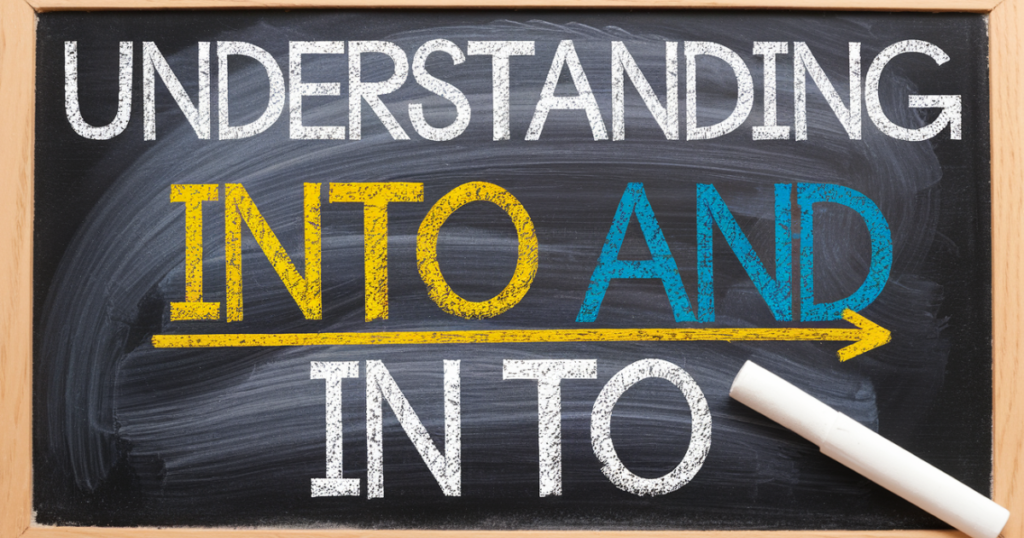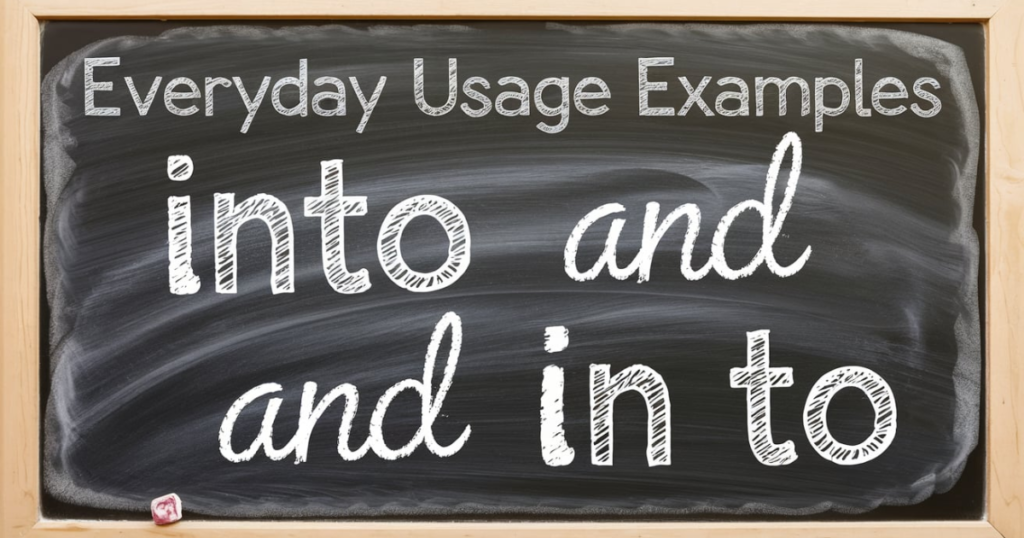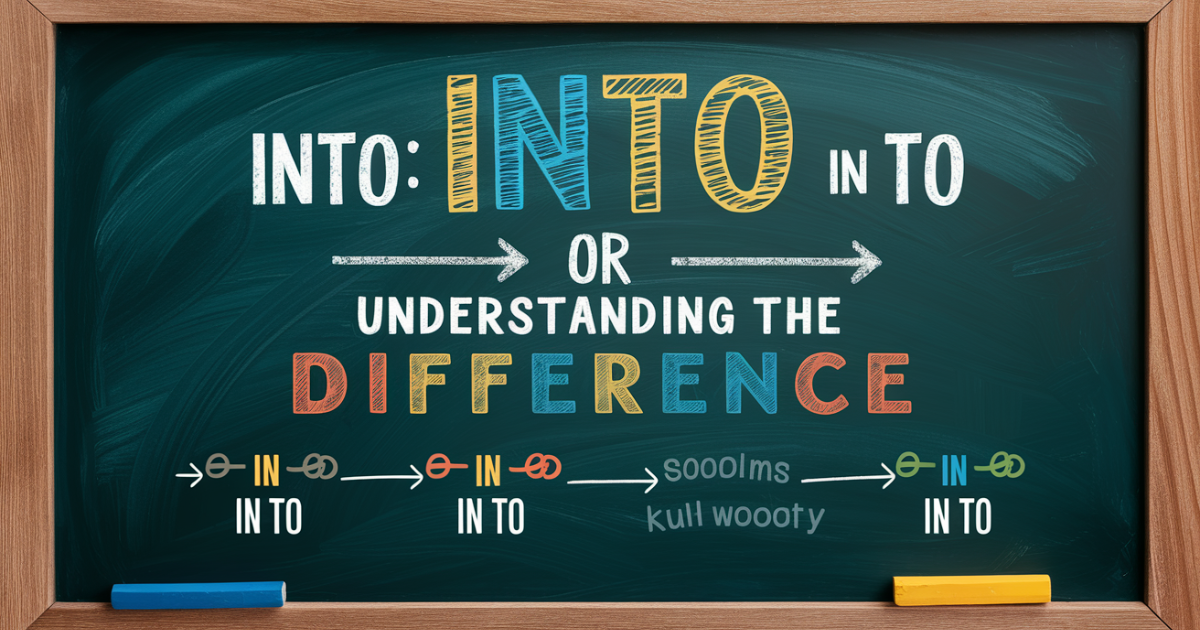The distinction between into or in to can be confusing, but understanding their meanings and usage is essential for clear communication. While they may appear similar, they serve different purposes in sentences, and getting them right can improve your writing and speaking.
“Into” is a preposition that generally indicates movement or direction toward the inside of something, while “in to” is a combination of the preposition “in” and the particle “to,” which often appears in different contexts, such as with verbs or phrases that involve purpose. Knowing when to use each can make your sentences more precise.
Understanding Into And In To

Into: Definition and Usage
Into is a preposition that indicates movement toward the inside or a direction leading to a particular location. It implies a change in position or state, often showing entry or involvement. It can be used to express physical movement into a space or a more abstract idea of transformation or development.
The word suggests an action that brings something or someone inside a defined boundary.
Examples
- She dove into the water with excitement.
- The children ran into the house after school.
You Also Like To Read This: Rational Or Rationale: What’s The Difference?
In To: Definition and Usage
In to is a combination of the preposition in and the particle to, often used together to form a part of a verb phrase. It indicates that someone is entering or going to a place or situation, but the action is separate from the idea of movement into a location.
In to can also be used when describing actions or states related to going toward something. It is commonly found in phrases like “check in to,” “come in to,” or “sign in to.”
Examples
Phrasal Verb with Preposition: She broke into the conversation with an exciting announcement.
Verb Phrase with Infinitive: He went in to meet the manager for an interview.
Side-by-Side Comparison
| Aspect | Into | In To |
| Definition | Indicates movement or direction towards something or inside a place. | A combination of a preposition and an infinitive verb, indicating purpose or direction. |
| Usage | Used when something moves inside a space or changes state. | Used when an action follows a verb and the preposition “in” is part of a phrase, leading to an infinitive. |
| Examples | She jumped into the pool. | He walked in to talk to the teacher. |
| Function | Acts as a preposition showing direction or movement. | Acts as a part of a verb phrase with an infinitive. |
| Common Confusion | Often confused with “in to,” but “into” implies a physical movement. | “In to” is often misinterpreted as “into” but is different as it connects to a verb phrase. |
| Key Difference | Into shows motion or direction into a space. | In to links a verb with an infinitive, often used to indicate purpose. |
The confusion between “into” and “in to” arises from their similar sounds, but they serve very different purposes in sentences. Into is a preposition that indicates movement or direction toward the inside of a place or object. For example, “She dove into the water” clearly shows the action of entering the water.
On the other hand, in to is a combination of the preposition “in” and the infinitive verb “to,” typically used when the preposition is part of a larger verb phrase. An example would be “He went in to grab his coat,” where “in” is part of the verb phrase and does not indicate physical movement.
“Into” and “In To”: ESL Exercises for Teaching
Teaching the difference between “into” and “in to” in ESL can be challenging for learners. “Into” should be used to express movement toward the inside of something, like “She walked into the room.”
On the other hand, “in to” often occurs when “in” is part of a verb phrase, such as “He came in to eat.” ESL exercises should focus on creating contexts where the proper usage of each phrase is clear.
Everyday Usage Examples

Here are 4 everyday usage examples for both “into” and “in to,” along with their grammar types:
Examples with “Into” (Preposition of Movement)
- She walked into the café.
(Preposition indicating movement toward the inside of a place.) - The cat jumped into the box.
(Preposition showing motion toward a specific location.) - He poured the juice into the glass.
(Preposition describing the direction of an action.) - They dived into the pool.
(Preposition indicating movement toward something.)
Examples with “In To” (Verb Phrase Construction)
- He came in to help with the cooking.
(Verb phrase “came in” followed by the infinitive “to help.”) - She turned in to get some rest.
(Verb phrase “turned in” meaning to go to bed, with “to” as part of the infinitive.) - I logged in to check my email.
(Verb phrase “logged in” used with an infinitive “to check.”) - They stopped in to say hello.
(Verb phrase “stopped in” meaning to visit briefly, followed by the infinitive “to say.”)
These examples demonstrate how “into” is used for indicating movement, while “in to” is used as part of a verb phrase with an infinitive.
FAQs
What is the difference between into and in to?
“Into” is a preposition indicating movement toward the inside of something, while “in to” is a combination of the preposition “in” and the infinitive “to,” used in verb phrases.
Where to use in or into?
Use “in” when referring to a location or state, and “into” when indicating movement toward a place or position.
What is the difference between with in and in?
“In” is a preposition indicating location, while “within” refers to something inside or inside the limits of something, often used more formally.
When to use into in a sentence?
Use “into” when describing movement or direction toward the inside of a place or thing. It implies change of state or position.
Conclusion
In summary, “into” and “in to” have distinct uses in English grammar. “Into” denotes movement or direction toward something, while “in to” is a combination of “in” and “to” used in verb phrases. Understanding the difference helps avoid confusion in sentence construction.
When describing a location, “in” is used, whereas “into” is used for indicating movement or transformation. Mastering these subtle distinctions can greatly improve your writing and communication skills.

Grammerlytips.com, authored by Jame, offers expert tips and insights on mastering grammar, enhancing writing skills, and boosting communication effectiveness.

